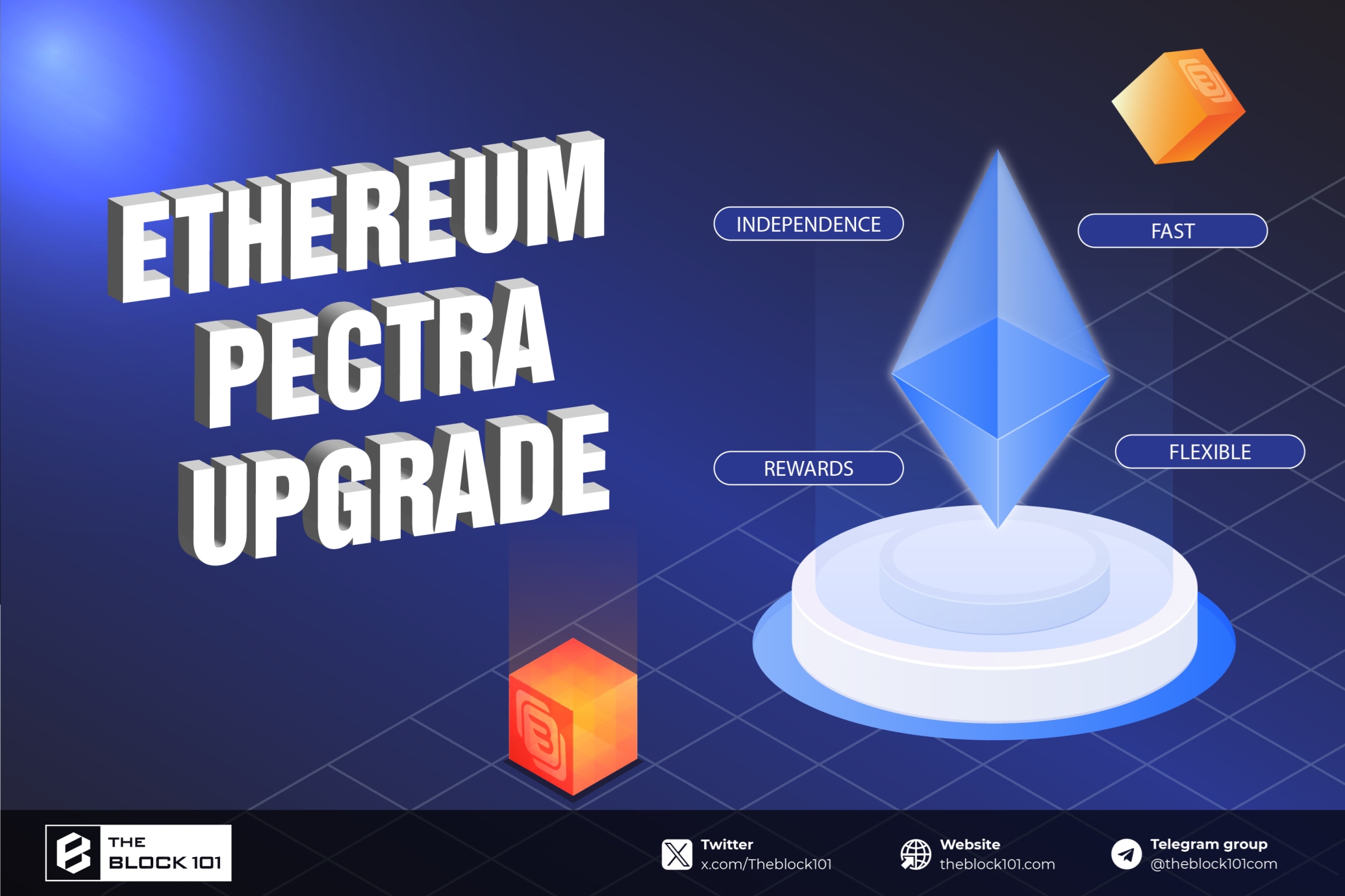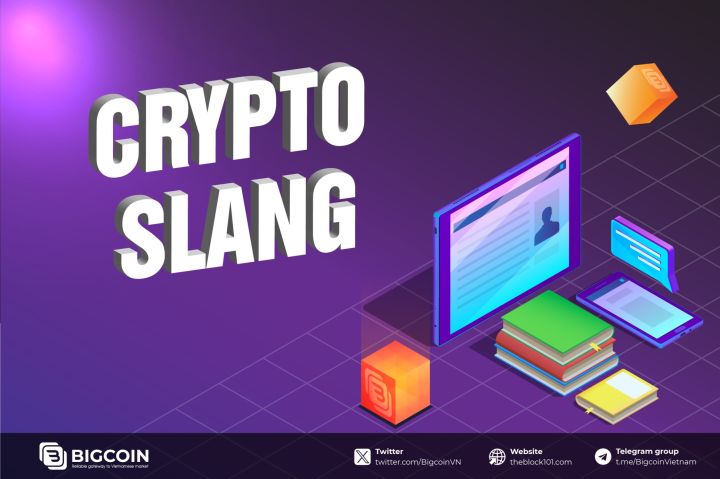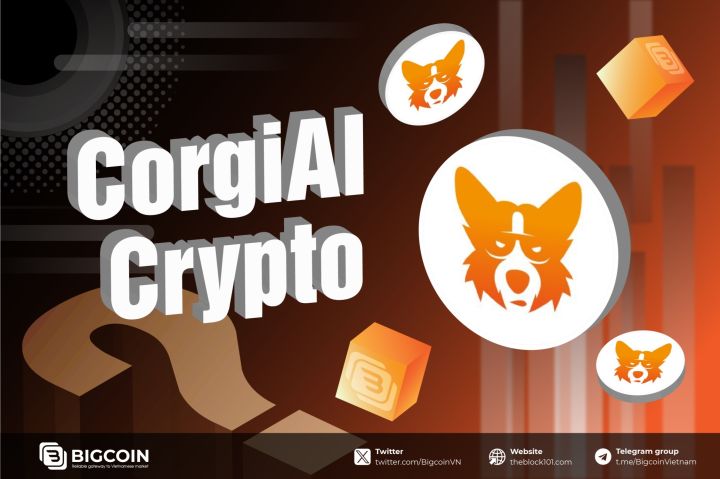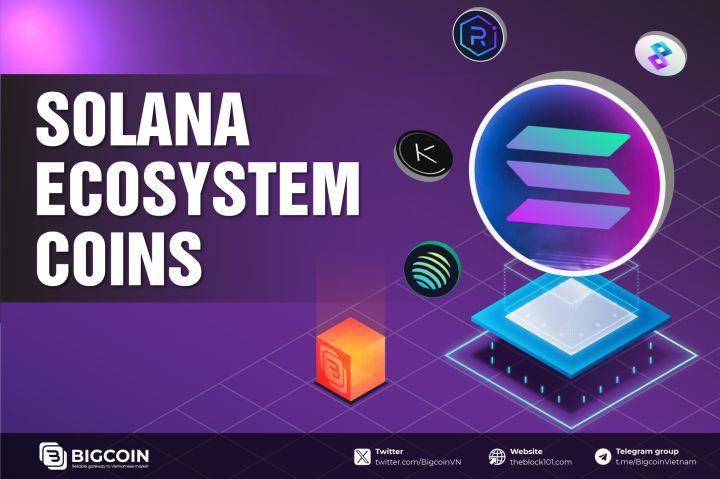
1. Key Highlights of Ethereum’s Pectra Upgrade
Scheduled for May 7, 2025, the Pectra upgrade is a significant milestone in Ethereum’s roadmap. Combining the Prague (execution layer) and Electra (consensus layer) upgrades, Pectra introduces 11 Ethereum Improvement Proposals (EIPs) to boost performance, scalability, and user experience. Below are the key highlights:
-
Increased Staking Limits for Validators (EIP-7251): The maximum staking limit per validator will rise from 32 ETH to 2,048 ETH. This allows large investors and institutions to consolidate multiple validators into a single node, reducing operational costs and optimizing network efficiency.
-
Account Abstraction and Smart Wallets (EIP-7702): EIP-7702 enables Externally Owned Accounts (EOAs) to integrate smart contract functionalities, paving the way for features like:
-
Bundling multiple transactions into one.
-
Allowing third parties to sponsor gas fees.
-
Alternative authentication methods like passkeys.
-
Setting spending limits and account recovery mechanisms.
-
-
Improved Scalability and Data Handling (EIP-7691): Increased “blob” capacity enhances the efficiency of Layer 2 (L2) solutions like rollups, lowering transaction fees and supporting network scaling.
-
Optimized Staking Experience (EIP-6110 & EIP-7002):
-
EIP-6110 reduces deposit processing time from 9 hours to 13 minutes.
-
EIP-7002 allows validators to initiate withdrawals via the execution layer, improving flexibility and security for stakers.
-
-
Foundation for Future Upgrades: Pectra lays the groundwork for future improvements like PeerDAS and Danksharding, enhancing data processing and network scalability.
=> Pectra is a comprehensive upgrade aimed at improving scalability, user experience, and preparing Ethereum for future advancements. It reinforces Ethereum’s leadership in blockchain and decentralized finance.
2. Historical Ethereum Upgrades and Price Impacts
.webp)
Ethereum has undergone several pivotal upgrades, with The Merge and Dencun being the most transformative in recent years. These upgrades reshaped Ethereum’s operations and influenced the broader blockchain ecosystem.
2.1. The Merge (September 15, 2022)
The Merge marked Ethereum’s full transition from Proof of Work (PoW) to Proof of Stake (PoS). Previously reliant on energy-intensive GPU mining, Ethereum shifted to staking, where users lock ETH to validate transactions and secure the network. This reduced energy consumption by 99.95% and cut new ETH issuance by ~90%, making ETH less inflationary, especially with EIP-1559’s fee-burning mechanism.
Despite high expectations, ETH’s price didn’t surge as anticipated. Pre-Merge hype drove ETH from $1,000 to ~$1,600, but post-Merge, it dropped to ~$1,200 due to “sell the news” dynamics and market turbulence, including the FTX collapse.
2.2. Dencun (March 13, 2024)
The Dencun upgrade, combining Cancun (execution layer) and Deneb (consensus layer), introduced key EIPs, notably EIP-4844 (Proto-Danksharding). This enabled “blobs,” allowing L2 rollups (e.g., Arbitrum, Optimism, zkSync) to store data more cost-effectively, reducing L2 transaction fees from tens of cents to under a cent, making dApps more accessible.
ETH rose slightly from ~$3,700 to $4,000 post-Dencun, driven by positive market sentiment. However, the rally fizzled, and ETH corrected to ~$3,200 amid broader market downturns.
3. Which Coin Groups Could Benefit from the Pectra Upgrade?
.webp)
The Pectra upgrade’s enhancements in network performance, user experience, and staking mechanisms are likely to positively impact several token groups within Ethereum’s ecosystem:
-
Layer 2 (L2) Solution Tokens: EIP-7691 increases blob capacity from 3 to 6 per block, boosting the efficiency of L2 solutions like Arbitrum (ARB), Optimism (OP), zkSync (ZK), StarkNet (STRK), and Base, potentially driving adoption and token value.
-
Smart Wallet and Security Project Tokens: EIP-7702’s account abstraction enables smart wallets with features like gas sponsorship and multi-factor authentication. Projects like Safe (SAFE), Argent, and wallet security tokens could see increased usage.
-
Staking Platform Tokens: EIP-7251’s raised staking cap (32 ETH to 2,048 ETH) benefits large investors and institutions. Platforms like Lido (LDO), Rocket Pool (RPL), EigenLayer (EIGEN), and other staking services may experience growth in token demand.
-
DeFi and Payment Project Tokens: Improved performance and lower fees could accelerate DeFi growth, benefiting projects like Uniswap (UNI), Aave (AAVE), MakerDAO (MKR), and payment platforms like Circle (USDC), enhancing liquidity and token usage.
-
NFT and Blockchain Gaming Tokens: Reduced fees and enhanced network performance may boost NFT and gaming projects like Axie Infinity (AXS), Decentraland (MANA), and similar platforms, increasing activity and token value.
4. Potential Risks and Notes for Investors
.webp)
With innovations like EIP-7702 (smart wallet support), EIP-7251 (higher staking caps), and blob optimizations for L2, Pectra promises a cheaper, smoother, and more user-friendly Ethereum. However, investors should remain cautious of market uncertainties that could overshadow its short-term benefits.
4.1. “Sell in May” Historical Effect
The adage “Sell in May and go away” reflects a historical trend of sell-offs in early summer due to low liquidity and cautious investor sentiment. Pectra’s May 7, 2025, launch aligns with this sensitive period, potentially leading to short-term ETH price corrections despite the upgrade’s merits.
4.2. Geopolitical Tensions: Trade Wars and Tariffs
As of early May 2025, global markets face:
-
Escalating U.S.-China-EU trade wars with retaliatory tariffs.
-
Supply chain disruptions in tech and energy sectors.
-
Geopolitical conflicts in the Middle East and Eastern Europe, fostering defensive investor sentiment.
These factors could dampen risk appetite, increasing selling pressure on crypto, which is highly sentiment-driven.
4.3. Unclear Monetary Policy
The U.S. Federal Reserve and other central banks have yet to signal clear interest rate cuts. Prolonged high interest rates could continue pressuring speculative assets like crypto, raising questions about capital inflows into ETH during this period.
4.4. Advice for Investors
Pectra is a critical long-term upgrade for Ethereum’s ecosystem, particularly for L2, staking, and smart wallet projects. However, short-term volatility requires careful strategy:
-
Avoid FOMO during pre-upgrade ETH price spikes.
-
Consider partial profit-taking if gains were made in Q1–Q2.
-
Monitor market reactions post-Pectra launch.
-
Use potential corrections as opportunities for dollar-cost averaging (DCA) with a medium-to-long-term outlook.
5. Conclusion
The Pectra upgrade on May 7, 2025, is a strategic leap for Ethereum, delivering technical advancements like smart wallet support, expanded staking, and lower L2 transaction costs. While promising, investors must navigate short-term market dynamics and macroeconomic factors to make informed decisions.
Disclaimer: This article is intended solely for informational and reference purposes. It does not constitute financial or investment advice. Any investment decisions should be made with careful consideration, and readers are fully responsible for their own actions. Please consult with a qualified financial advisor before making any investment choices.
Read more:
- Top 5 Best Play-to-Earn Web3 Games in 2025
- Exploring Decentralized AI Platforms: A New Era of Intelligence
- Top 10 AI Crypto Coins Set to Explode in 2025

 English
English Tiếng Việt
Tiếng Việt
%20(21).png)
%20(20).png)
%20(19).png)
%20(18).png)
%20(17).png)
%20(16).png)
%20(15).png)
%20(11).png)
.png)
%20(2).png)
%20(3).png)
%20(5).png)




